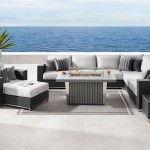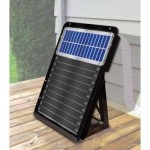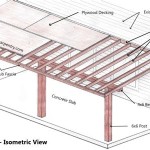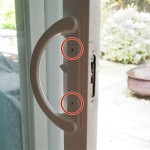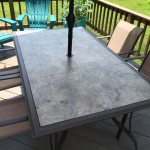Hanging Patio Lights on Wire: A Comprehensive Guide
Creating an inviting and aesthetically pleasing outdoor space is often a priority for homeowners. Patio lights can transform a drab outdoor area into a warm and welcoming environment, ideal for relaxation, entertaining, or simply enjoying the evening air. While various methods exist for hanging patio lights, utilizing a wire support system offers a durable, adaptable, and professional-looking solution. This article will detail the process of hanging patio lights on wire, covering essential considerations, necessary materials, installation steps, and maintenance tips.
Key Considerations Before Installation
Before commencing the installation process, several factors should be carefully evaluated. This preliminary assessment ensures a successful and long-lasting result.
Span Length and Wire Gauge: Determining the distance between support structures is paramount. Longer spans necessitate a thicker gauge wire to prevent sagging. Sagging not only detracts from the aesthetic appeal but also places undue stress on the lighting strands and support structures. Consult wire gauge charts or seek advice from a hardware professional to select an appropriate wire gauge for the intended span length. Consider the weight of the light string as well; heavier lights will require a stronger wire.
Support Structure Integrity: The structural integrity of the chosen support points is crucial. These support points can include trees, posts, walls, or dedicated poles specifically installed for lighting. Ensure that the chosen structures are robust enough to withstand the tension exerted by the wire and the weight of the lights, especially when subjected to wind or inclement weather. If using trees, select mature, healthy specimens with sturdy branches. For walls, verify that the mounting hardware is securely anchored into solid material, not just siding or drywall. For posts, ensure they are adequately embedded in the ground and treated to prevent rot.
Light Strand Weight and Type: Different types of patio lights vary significantly in weight. Incandescent bulbs are typically heavier than LED bulbs. The weight of the light strand directly influences the wire gauge and support structure requirements. Furthermore, consider the type of light strand being used. Some strands are more susceptible to damage from prolonged exposure to sunlight or moisture. Selecting weather-resistant light strands designed for outdoor use is essential.
Power Source Accessibility: Planning the location of the lights in relation to a power source is a critical step. Extension cords should be minimized or avoided altogether, as they can present a tripping hazard and detract from the overall aesthetic. Consider installing a dedicated outdoor outlet near the intended lighting area. If an extension cord is unavoidable, ensure it is rated for outdoor use and is properly secured to prevent tripping.
Materials Required for Hanging Patio Lights on Wire
Gathering the necessary materials beforehand streamlines the installation process and ensures efficiency.
Stranded Steel Wire or Cable: Stranded steel wire, also known as aircraft cable, is the preferred choice for hanging patio lights due to its strength, durability, and resistance to corrosion. Opt for galvanized or stainless steel wire for optimal longevity, especially in coastal environments or areas with high humidity. The appropriate gauge of the wire will depend on the span length and the weight of the lights. PVC coated wire is also an option, offering added protection against the elements.
Turnbuckles: Turnbuckles are essential for adjusting the tension of the wire. They consist of a metal frame with threaded ends that allow for tightening or loosening the wire. Select turnbuckles made from stainless steel or galvanized steel to resist corrosion. The size of the turnbuckle should be appropriate for the wire gauge being used.
Eye Bolts or Screw Hooks: Eye bolts or screw hooks are used to attach the wire to the support structures. Eye bolts are generally preferred for securing the wire to solid surfaces like walls or posts, while screw hooks are suitable for attaching the wire to trees or other wooden structures. Ensure that the eye bolts or screw hooks are appropriately sized to accommodate the wire and are rated to handle the load.
Wire Rope Clamps (Crimps): Wire rope clamps, also known as crimps, are used to create secure loops at the ends of the wire. These clamps are typically made of aluminum or copper and are crimped onto the wire using a specialized crimping tool. Selecting the correct size clamp for the wire gauge is crucial for ensuring a secure connection.
Crimping Tool: A crimping tool is necessary for securely attaching the wire rope clamps. This tool applies pressure to the clamp, deforming it and creating a strong bond between the clamp and the wire. The type of crimping tool required will depend on the type and size of wire rope clamps being used.
Cable Cutters: Cable cutters are essential for cleanly cutting the steel wire or cable to the desired length. Using standard pliers or wire cutters can damage the wire and create frayed ends. Cable cutters are designed specifically for cutting steel wire and provide a clean, precise cut.
Zip Ties or S-Hooks: Zip ties or S-hooks are used to attach the light strands to the support wire. Zip ties offer a simple and inexpensive solution, while S-hooks provide a more secure and adjustable attachment method. Choose weather-resistant zip ties or S-hooks to ensure longevity.
Drill and Drill Bits (if required): If attaching the wire to walls or posts, a drill and appropriate drill bits will be necessary to create pilot holes for the eye bolts. Select drill bits that are compatible with the material being drilled and are slightly smaller than the diameter of the eye bolt threads.
Level: A level is essential for ensuring that the wire is installed horizontally, creating a visually appealing and professional-looking result.
Step-by-Step Installation Process
Following a systematic installation process ensures a secure and aesthetically pleasing result.
Measure and Plan: Accurately measure the distance between the support structures. Add extra length to the wire to account for creating loops at the ends and for adjusting the tension with the turnbuckles. Create a detailed plan outlining the layout of the lights and the location of each support point.
Install Support Hardware: Install the eye bolts or screw hooks at the designated support points. For walls or posts, drill pilot holes and then screw in the eye bolts. Ensure that the eye bolts are securely anchored into the support structure. For trees, use screw hooks or wrap the wire around the trunk, ensuring not to damage the tree bark.
Cut and Prepare the Wire: Cut the wire to the appropriate length, adding extra length for loops and adjustments. Use cable cutters to ensure a clean cut. At each end of the wire, create a loop using a wire rope clamp. Thread the wire through the wire rope clamp, form a loop, and then thread the wire back through the clamp. Position the clamp close to the end of the wire. Use a crimping tool to securely crimp the clamp onto the wire.
Attach Turnbuckles: Attach a turnbuckle to one eye bolt or screw hook at each end of the wire run. Connect the looped end of the wire to the other end of the turnbuckle. Ensure that the turnbuckle is in the fully extended position to allow for maximum adjustment.
Install the Wire: Attach the free end of the wire to the corresponding eye bolt or screw hook. Ensure that the wire is taut and does not sag excessively. Use a level to verify that the wire is installed horizontally.
Tighten and Adjust: Use the turnbuckles to tighten the wire. Slowly turn the turnbuckles until the wire is taut and the desired tension is achieved. Avoid overtightening the wire, as this can place undue stress on the support structures. Periodically check the tension of the wire and adjust as needed.
Attach the Lights: Attach the light strands to the support wire using zip ties or S-hooks. Space the lights evenly along the wire to create a uniform appearance. Securely fasten the zip ties or S-hooks to prevent the lights from sagging or shifting in the wind.
Test the Lights: Plug in the lights and verify that they are functioning correctly. Inspect the installation for any potential hazards, such as loose wires or exposed electrical connections. Ensure that the lights are securely attached to the support wire and that the wire is properly tensioned.
Dress the Wires: Conceal or organize any excess wire from the light strands to improve the aesthetic appeal. Use zip ties or wire clips to secure the wires to the support wire or to the support structures.
Maintenance and Longevity
Regular maintenance ensures the longevity and safety of the patio light installation.
Regular Inspections: Periodically inspect the wire, support structures, and light strands for any signs of damage or wear. Check for loose connections, frayed wires, or corroded hardware. Address any issues promptly to prevent further damage or potential hazards.
Wire Tension Adjustments: Over time, the wire may loosen due to stretching or temperature fluctuations. Periodically adjust the turnbuckles to maintain the proper wire tension. Ensure that the wire remains taut and does not sag excessively.
Cleaning: Clean the light strands and support wire regularly to remove dust, dirt, and debris. Use a soft cloth and mild detergent to clean the lights. Avoid using harsh chemicals or abrasive cleaners, as these can damage the lights and the wire.
Seasonal Storage: In areas with harsh winters or extreme weather conditions, consider removing the light strands during the off-season. This protects the lights from damage and prolongs their lifespan. Store the lights in a dry, protected location.
Tree Growth Monitoring: If using trees as support structures, monitor the tree's growth and ensure that the wire does not constrict or damage the tree bark. Adjust the wire as needed to accommodate the tree's growth. Consider using tree straps that are wider and more flexible to minimize potential damage.
By following these guidelines, homeowners can successfully install patio lights on wire, creating a beautiful and functional outdoor space that enhances their enjoyment of their property.

How To Hang Patio String Lights Blue I Style

How To Hang Patio String Lights Blue I Style

How To Hang Patio Lights

Pro Dec Silver 40 Cable Wire Patio Light Hanging Kit For Outdoor Use By Simple Living Solutions Com

How To Hang Patio String Lights Blue I Style

How To Hang String Lights For Your Patio

Using A Cable To Hang String Lights Concord Carpenter

How To Hang Patio String Lights Blue I Style

Newhouse Lighting Stringkit2 Stainless Steel Hanging Suspension Kit With Vinyl Coated Wire For Outdoor Patio Lights Up To 48 Ft Includes Turnbuckle And Hooks Com

Newhouse Lighting 48 Ft String Light Hanging Mounting Kit Wire Hooks Stringkit The Home Depot

